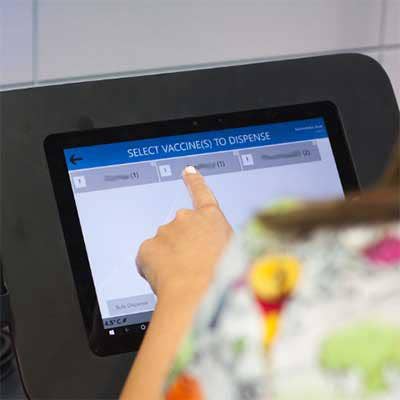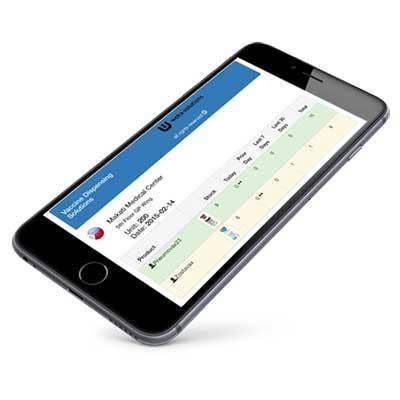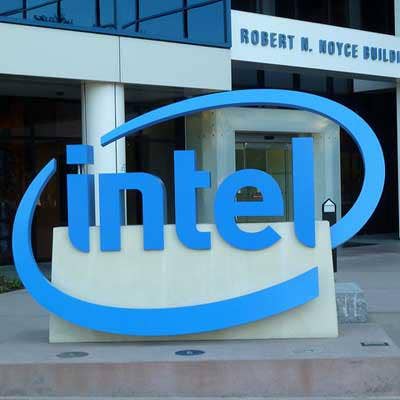IoT Channel Chronicles: How Microsoft Partner BlueMetal Profited From Smart Refrigerators

The IoT Channel Opportunity
BlueMetal, acquired by Insight Company almost a year ago, has been leveraging its partnerships to profit from the Internet of Things for almost two years.
The Watertown, Mass.-based company said its most prominent IoT application was when it worked with Weka Health Solutions and Microsoft to improve vaccine management, helping more people be protected against diseases. BlueMetal was also recently awarded IoT Partner of the Year by Microsoft during its Worldwide Partner Conference in July.
CRN talked to Scott Jamison, the VP of services at BlueMetal about the opportunities and challenges he is facing in IoT.
Note: This is the second of CRN's weekly IoT Channel Chronicles series, in-depth interviews with solution providers to dig into opportunities and challenges the channel is facing with the Internet of Things.

When did BlueMetal start investing in the Internet of Things? How big a part of the business is it now?
We saw a definite growth area in the industry and started making investments about two years ago. In doing so, we could capture early stage clients, get feedback and build up our own IP [intellectual property].
IoT is definitely a significant part of our business – it makes up more than 20 percent [of the company's annual revenue].

Who is your main partner for IoT and how do you work with them to build solutions for customers?
Microsoft is definitely a great partner for us. One of the things we leverage in our IoT solution is Microsoft's IoT suite, which is based on Azure. We're able to leverage a lot of these advanced capabilities in the Azure [cloud] platform and Microsoft is able to learn from us.
When we build a solution for our client, they have specific business needs. Microsoft's platform doesn't provide the whole thing – it's not intended to. It provides a great baseline platform for us to leverage, like the IoT suite dashboard, the IoT hub, and stream analytics. Microsoft handles the plumbing under the covers and we use that plumbing to our advantage to create a business solution.

What's a specific example of how you worked with Microsoft and other partners to deploy an IoT solution for a client?
The most prominent one is the Weka Smart Fridge. Weka is a health solutions company that decided to make a fridge for vaccines. Shipping a vaccine to a location where people need it is a trickier business than you'd think – some of the vaccines cost hundreds to thousands of dollars, vaccines need to stay at a constant fridge temperature at, let's say, 2 to 8 degrees Celsius, and sometimes those vaccines go missing because they're being shipped from the pharmaceutical company to a remote country.
So, what Weka did was create a fridge, but it was tricky because you want to make sure it is in the right temperature zone at all times, you might want inventory management, so you know where the vaccines are going, which are about to expire, or where the fridge happens to be.

How did you work with Weka to build an IoT solution to address these challenges?
Weka built the fridges itself and we built all the smarts to make it a smart fridge. So, sensors in the fridge talked to our software running on Raspberry Pi, a very small computer installed in the fridge and running Microsoft Azure – and tells [Azure] the current location, temperature, or whether anyone added a vaccine to the machine. We compile these telemetrics and send them to the cloud, and you can monitor the fridges from one dashboard.
So say I'm in a village in Africa and I happen to have a Measles vaccine. Five miles down the road there's a patient who needs it, but that particular location doesn't have the vaccine. From my center console, not only can I see [that] I could send one down there, I can see it hasn't been compromised by temperature and [it hasn't reached its] expiration date yet. It's a great way to let doctors save money in general on vaccines, but also to track them better and save more lives, frankly.

What's the process of sitting down with customers interested in IoT and walking through the different moving pieces to deploy a solution?
At BlueMetal we work with the customer through a three-phase approach: BlueSky, BluePrint, and BlueMetal.
Blue Sky is an envisioning phase. It's imagining the possible. And so when we work with a client, they'll say we think we have an idea of what to do, but we don't know if it's feasible. So we'll whiteboard the business need. We don't bring the technology into it right away, we think about what's possible based on the experience today. And we think about what's possible based on use-cases today.

Once you have come up with a feasible idea, what are the next steps?
Once we finalize that it's a reasonable thing to pursue with the clients, we prioritize what makes the most sense, and then go into BluePrint. Think about designing a house – like a pool, or having two floors - that's what we do with the IoT solution. In a house design, it's not just a construction person, you might have a pool vendor or plumber brought in. At BlueMetal we have designers or engineers on staff. And if we don't, if there's a sensor that does temperature, we'll bring that hardware partner into the mix and be the company that pulls the whole solution together with all these different moving parts.
Then we'll help them build the design by writing software, and pulling together and implementing the different vendor components.

Who else do you partner with for IoT, beyond Microsoft?
There's definitely different partners based on the solution – in the IoT space Microsoft is the primary vendor. We've also worked with Intel on sensors. We partnered with other companies from a sensor perspective depending on what kind of sensor we need. On the client side, if we want to render some dashboard information on a tablet, we've worked with Microsoft on their tablets, but also Apple from an iOS perspective.
So an ideal solution might have Azure IoT on the back end, but in the front end runs on a tablet like iOS, Android or Windows tablet.

Beyond consulting services, how else does BlueMetal profit from the Internet of Things?
We've been focusing on that custom application piece, and we're moving to provide entire solutions – not just the custom software, but also taking some of the IP we created that sits on top of the Microsoft platform. We customize it a little bit for specific clients, but [that] allows us to provide our IoT solutions to a lot more customers at less expense and greater profitability.
We really have an end-to-end full solution where we can bring servers for an on-premise installation, cloud offering and subscriptions, sensor data, as well as any networking upgrades that customers might need through connecting to the cloud. All of that is a growth area for us.

After you install an IoT solution, what further opportunities for profit are there?
On the other side, we offer managed services, so once a customer has a solution up and running, we have 24-7 help desk support for active maintenance and monitoring. Once you have a solution in the cloud, we help them upgrade and monitor that solution over time.

From a high level, describe BlueMetal's IoT strategy.
Our IoT offering sits within something we call real-time business; harnessing the latest technology to gather as much information as possible about what our clients need to know about their business.
For example, it's taking information around sales or employees, or anything that has to do with client business products, and doing deep analytics to make decisions. Another piece is seamless identity – logging in once and connecting from everywhere. Smart devices are another piece of that, taking the right combination of devices, connectivity, and security, packaging them together, and tailoring them for the needs of the clients.
If you take those three things and then add modern product and software development methodologies for getting things done more quickly from a software perspective, that enables our clients to use the latest technology to gather information and make real-time business decisions.